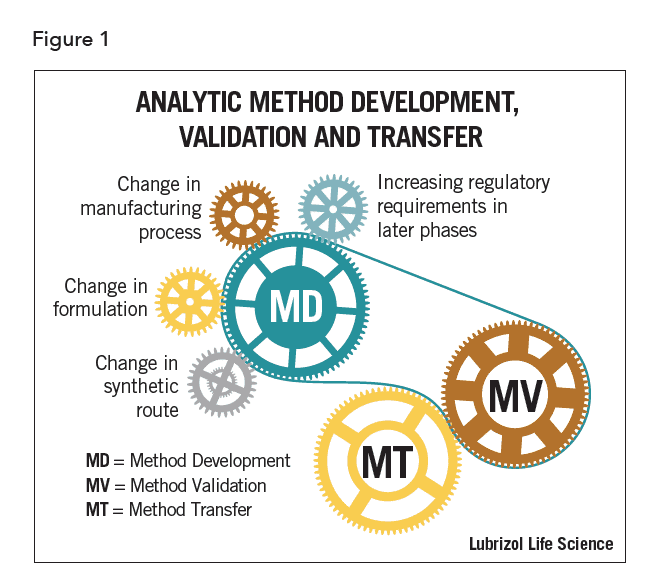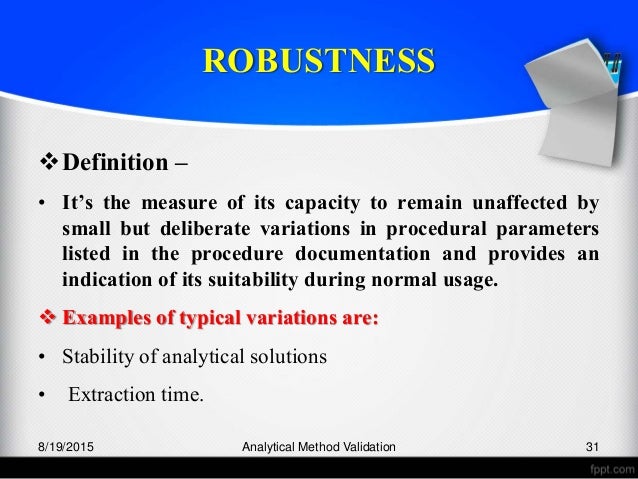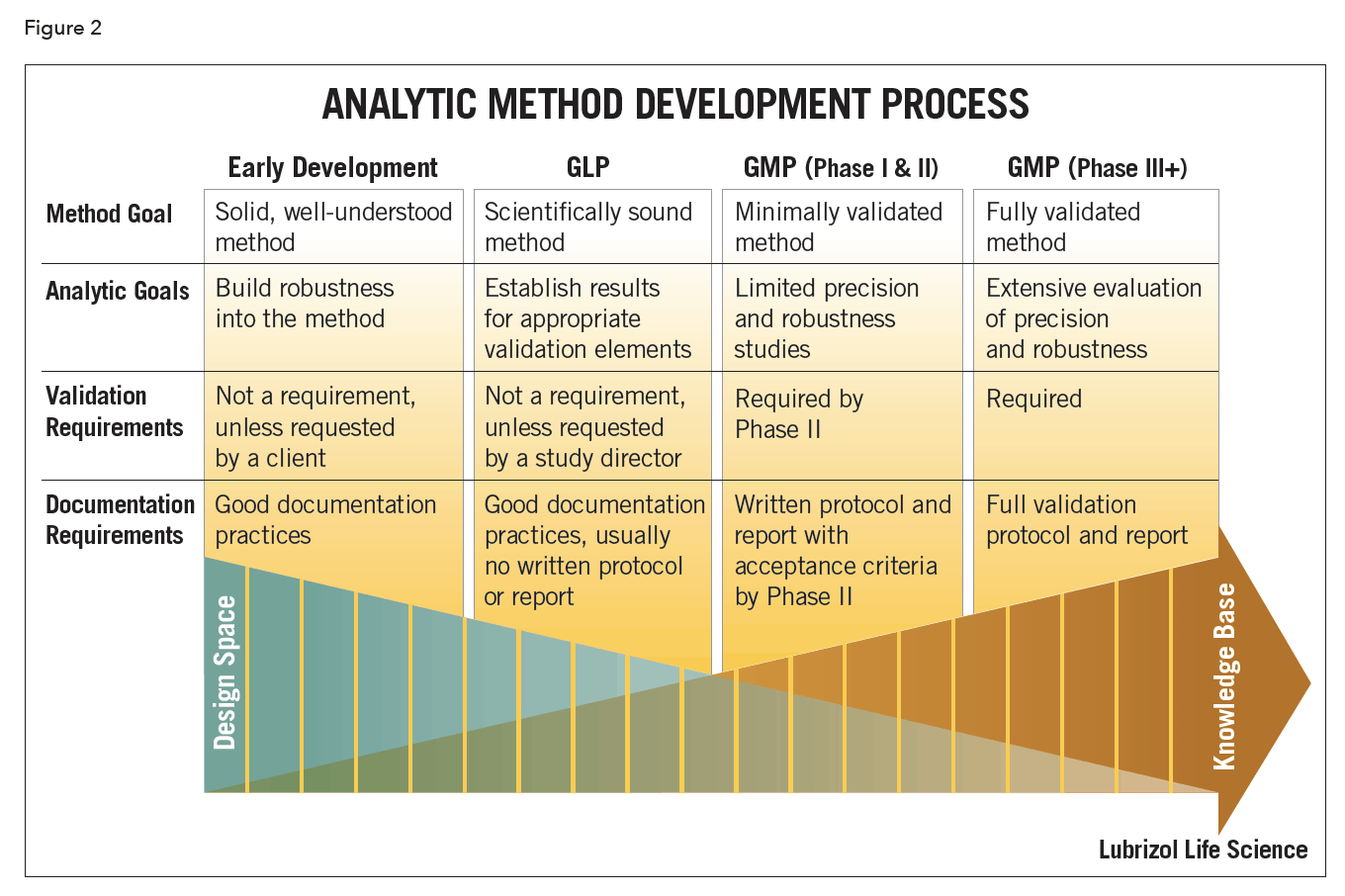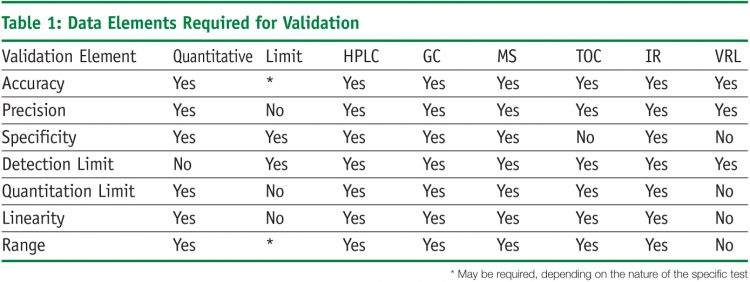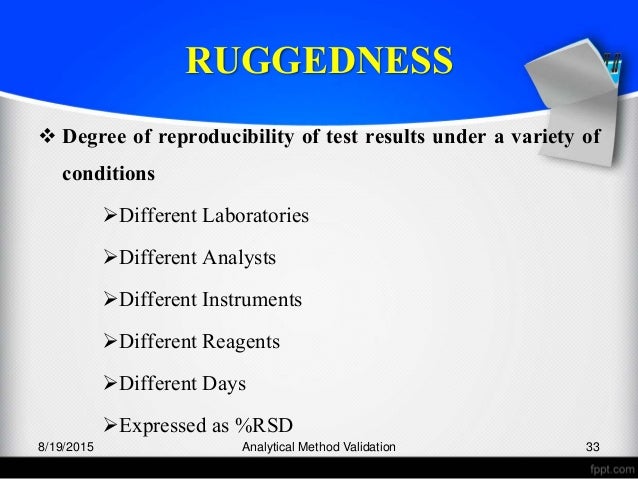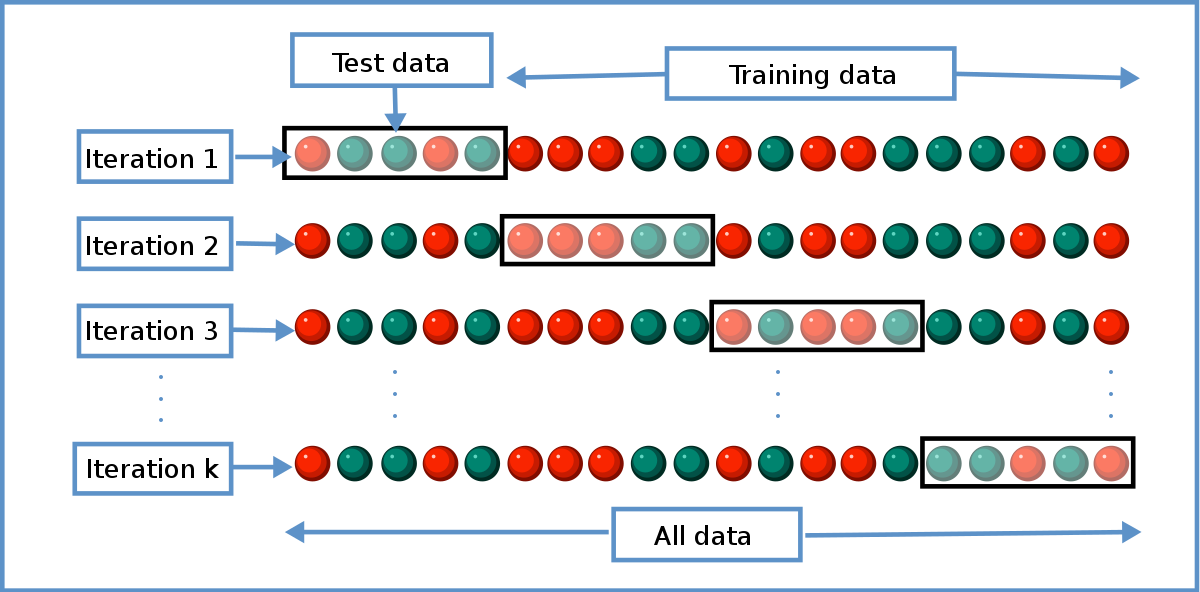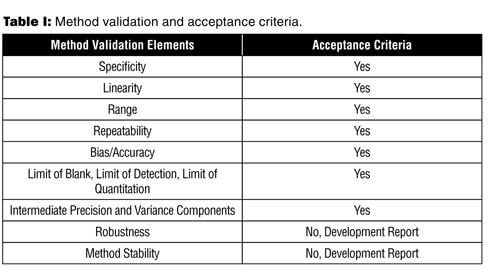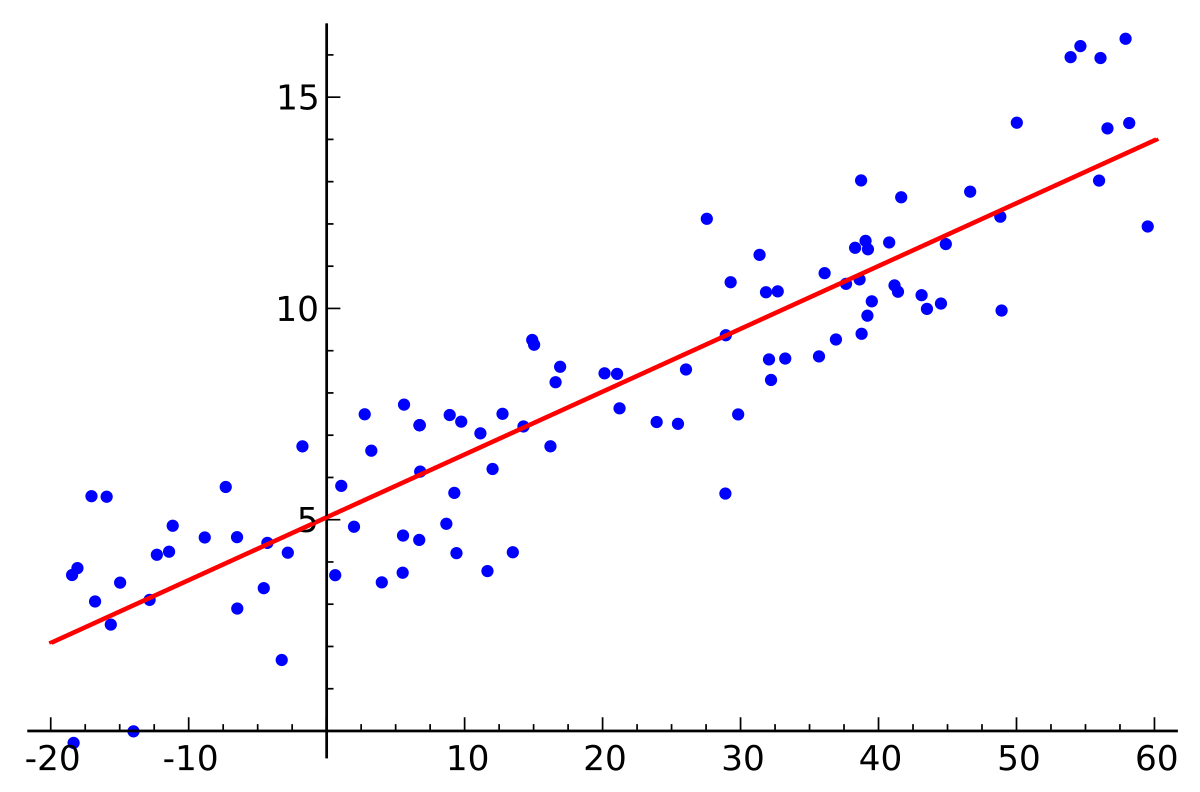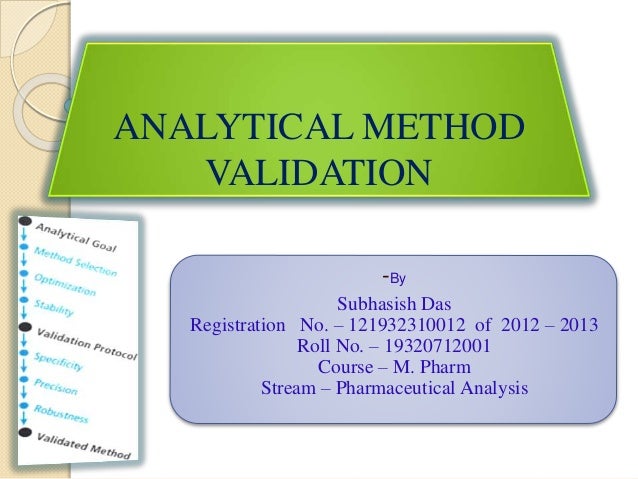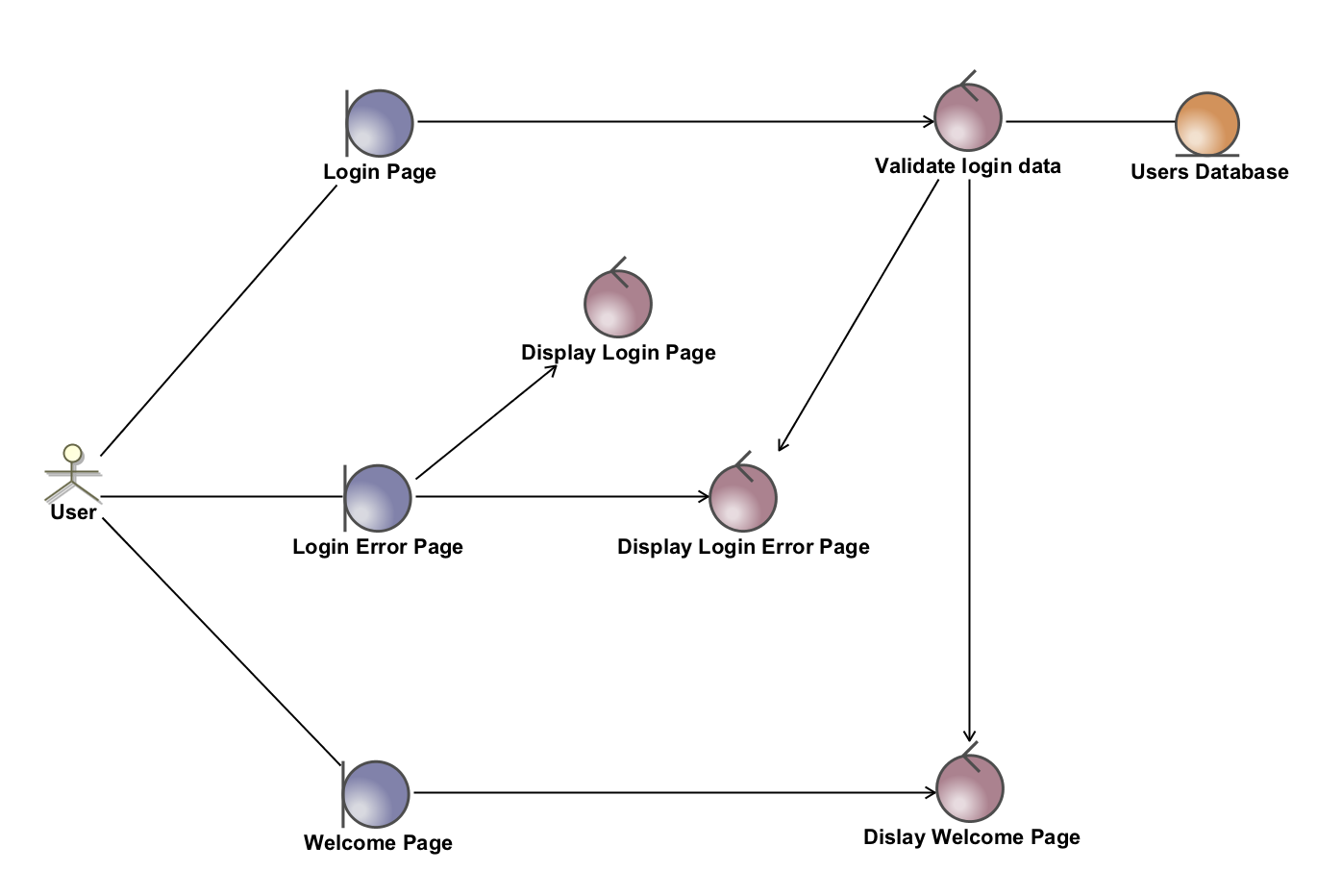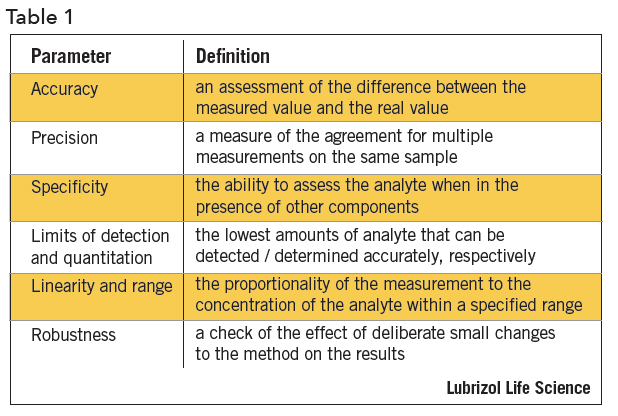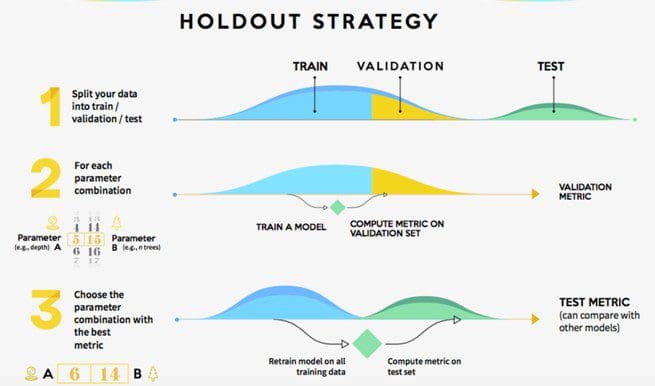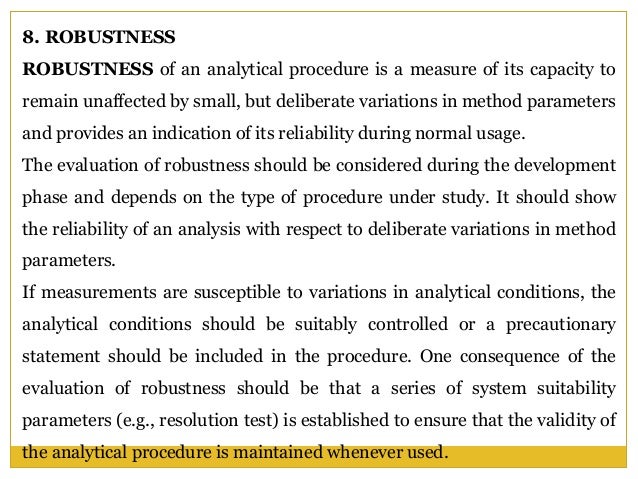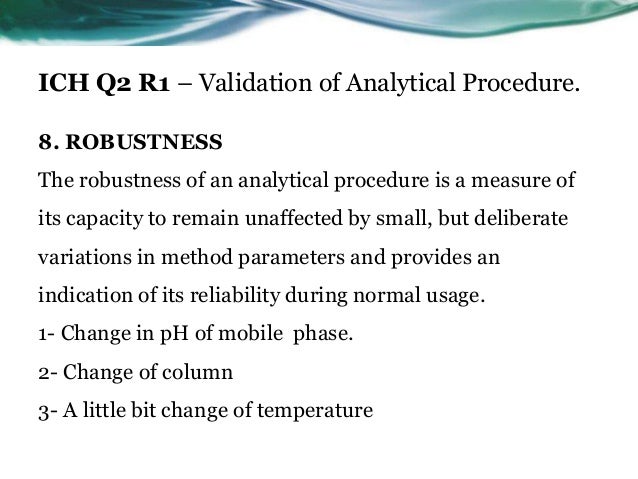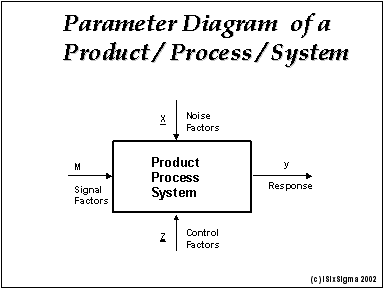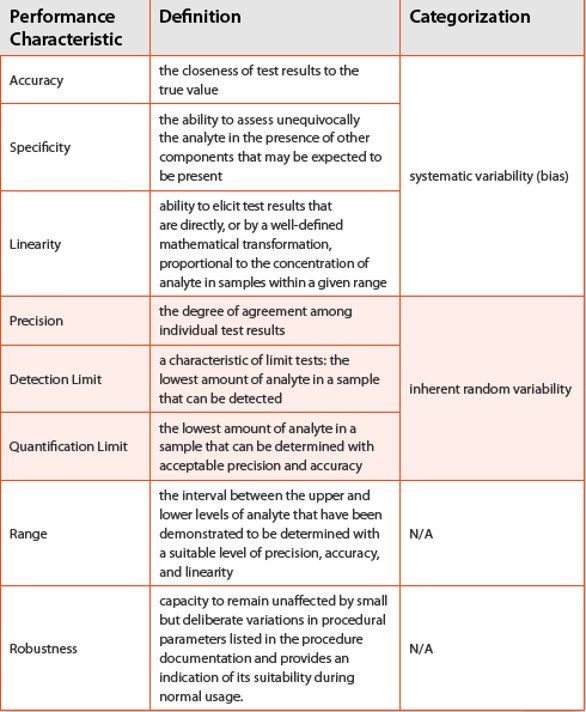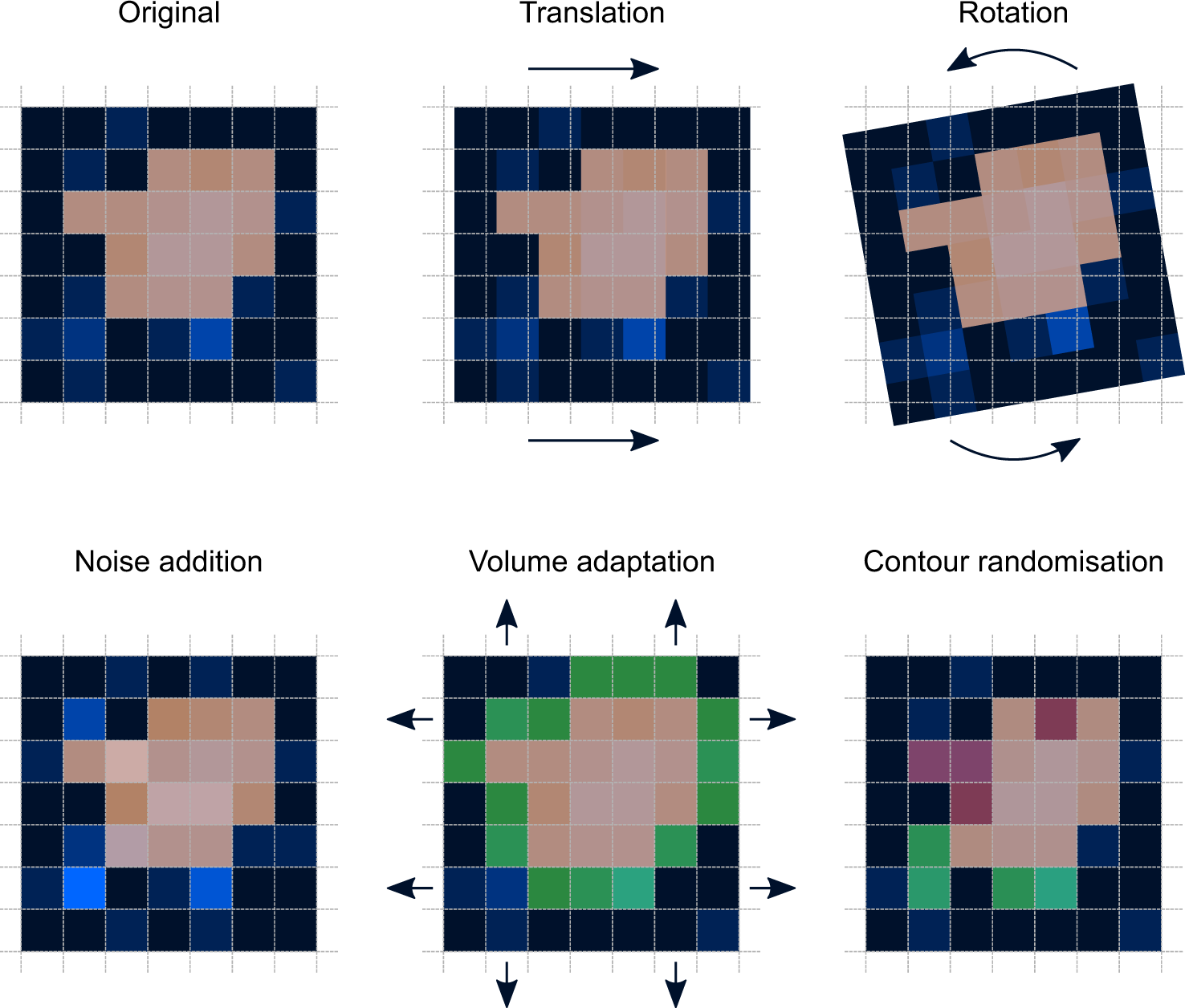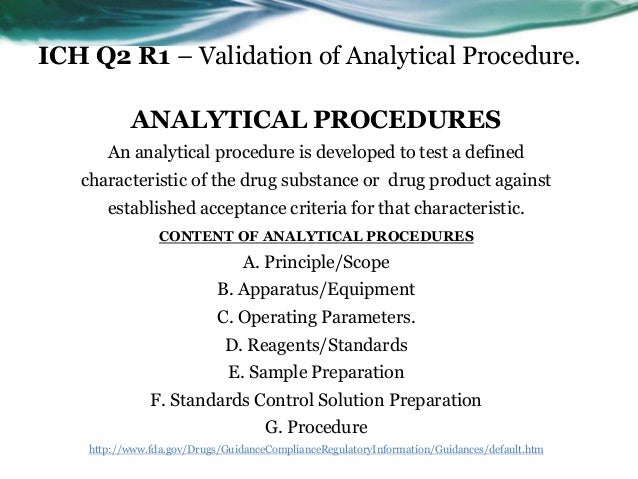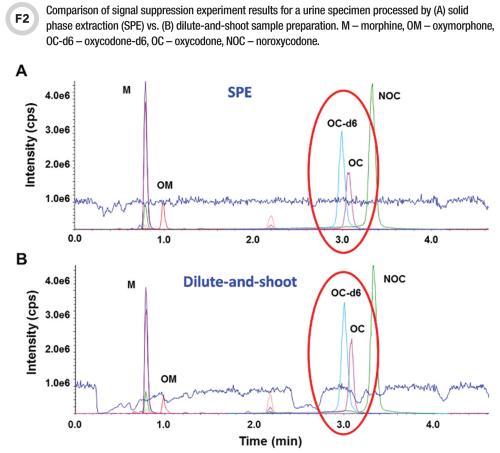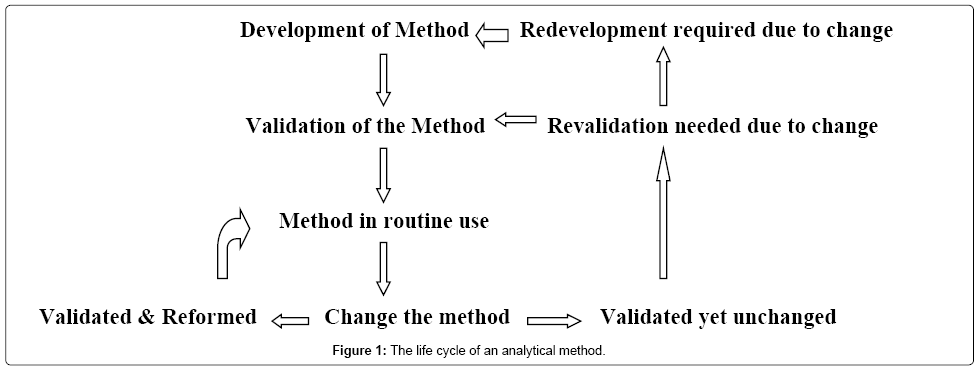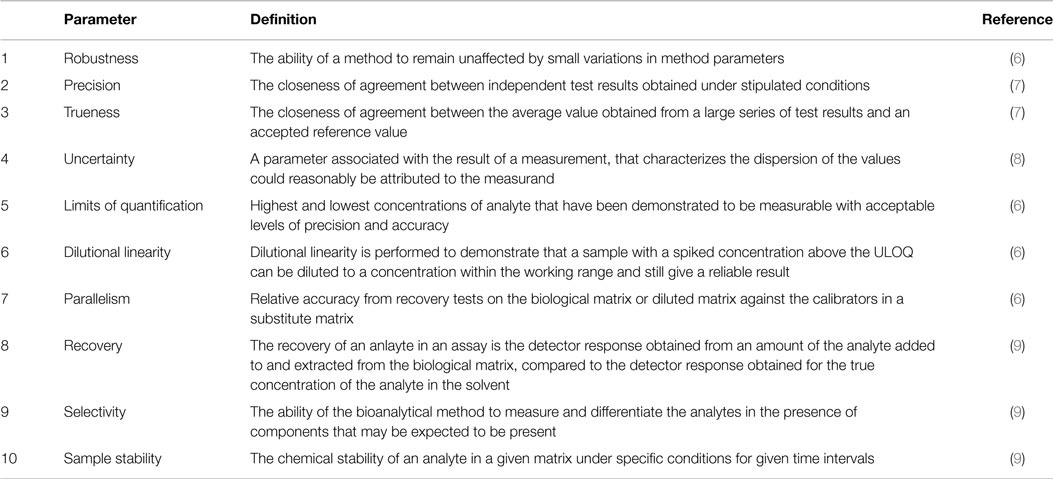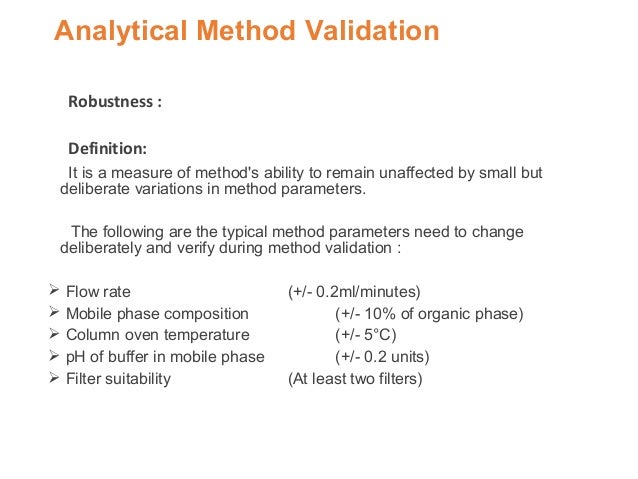Meaning Of Robustness In Method Of Validation
In this part of the course the robustness and ruggedness are introduced and explained.

Meaning of robustness in method of validation. Robustness data obtained during a methods development can be submitted in support of the validation of a method. The terms robustness and ruggedness refer to the ability of an analytical method to remain unaffected by small variations in method parameters mobile phase composition column age column temperature etc and influential environmental factors room temperature air humidity etc and characterize its reliability during normal usage. Robustness is the evaluation of an analytical method wherein the results obtained are found to be reliable even when performed in a slightly varied condition. Ruggednessshould be used as a parameter evaluating constancy of the results when external factors such as analyst laboratory instrument reagents and days are varied robustnessshould be used as a parameter characterizing the stability of the method with respect to variations of the internal factors parameters of the method.
In this article we will address the same question through the parameter called robustness which can be evaluated during method validation if not yet done earlier eg. In the usp the robustness of an analytical procedure is defined as a measure of its capacity to remain unaffected by small but deliberate variations in method parameters and provides an indication of its reliability in normal usage. Usually we deliberately make changes in the method parameters to see if the method can still generate valid data. It is the first stage of a robustness test to decide on which parameters should be tested and by how much to vary them.
Robustness is not only an indicator of good practice in method development but also a regulatory requirement. In computer science robustness is the ability of a computer system to cope with errors during execution and cope with erroneous input. The purpose of a robustness study is to find out as much as possible about potential issues with a new analytical method and thus how it will perform in routine use.





